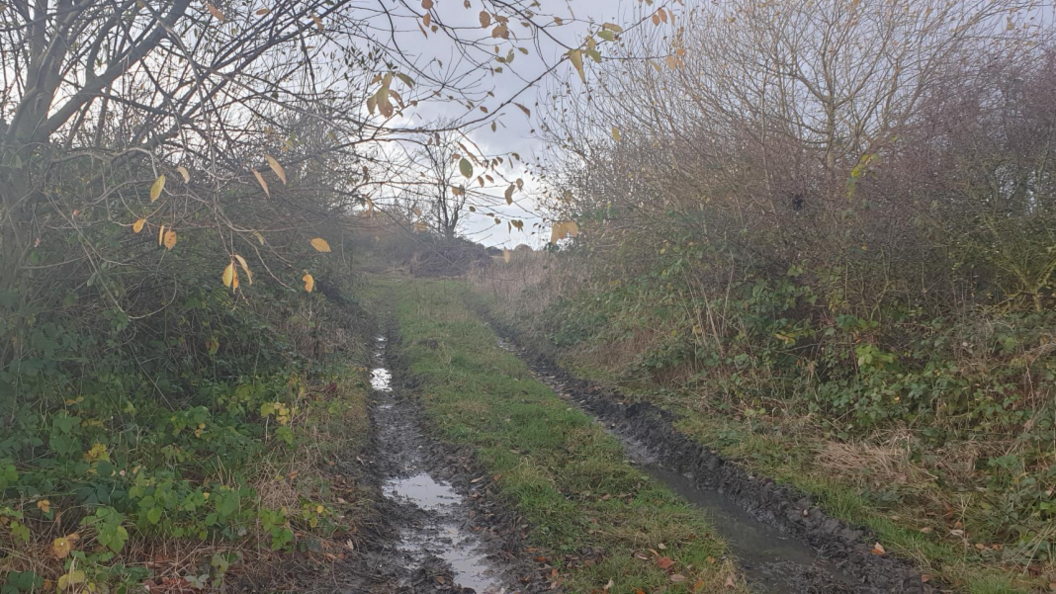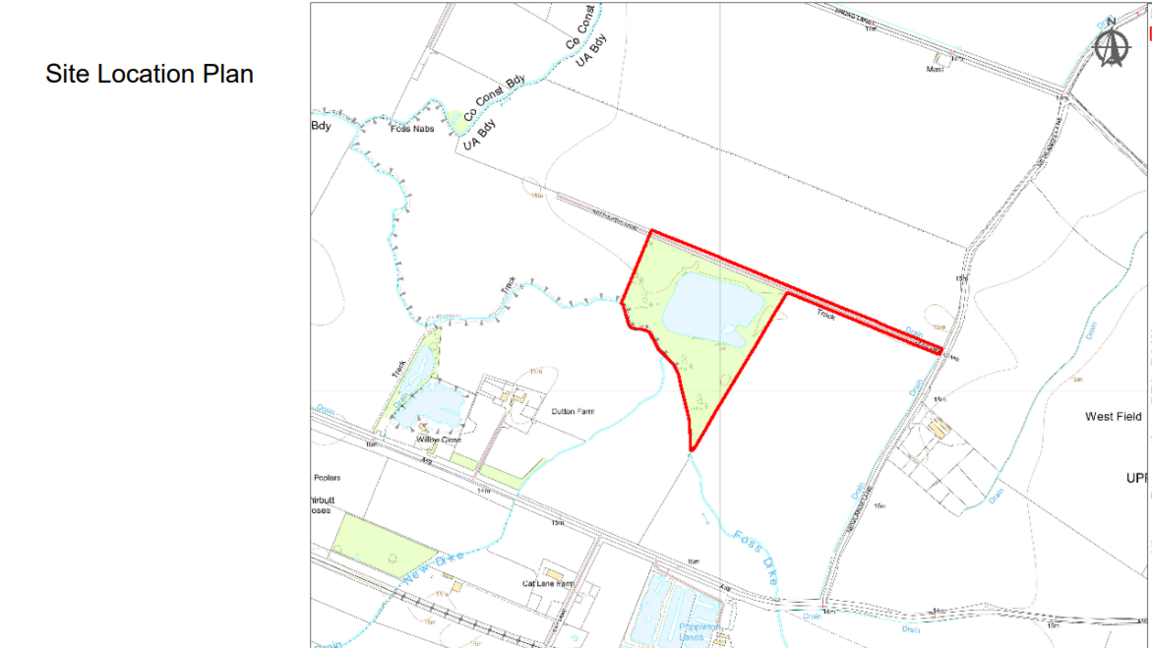Go-ahead for 300,000-tonne clay extraction plans

Council officers predict the development will lead to two extra vehicles passing through the area every hour
At a glance
Plans to extract 300,000 tonnes of clay from a field near York are approved
The material will be used to bolster flood defences and line canals
Some objections were raised over the impact on the environment and local traffic levels
- Published
More than 300,000 tonnes of clay will be extracted from a field on the edge of York to be used in flood defences.
City of York councillors voted unanimously in favour of the plan at a planning committee meeting on 1 December.
The council received eight letters objecting to the scheme, with concerns raised about its environmental impact and the risk created by an increase in lorry traffic on single-track roads nearby.
Rural West York Councillor Anne Hook said: "People who love to use that lane are going to be put in danger."

The site will be accessed from a farm track off Newlands Lane
The plans, were first submitted by Escrick Environmental Services (EES) in November 2021.
The extraction of the clay will take place over a period of around six-and-a-half years, after which the site will be turned into an oak woodland, according to the Local Democracy Reporting Service.
The site, west of Newlands Lane in Upper Poppleton, comprises an area of 6.8 hectares of scrubland including a large body of water, which was created through unauthorised clay extraction in 2007, according to the City of York Council's committee report.
Once extracted the clay will be used for flood defences, repairing canals and reservoirs and lining waste disposal sites.
Neville Ward, a resident of Upper Poppleton who objected to the plans, told councillors: "This is ripping up the countryside and putting inappropriate material back in.
"It's not a restoration of the site, it's a transformation of the site into something completely different."

As part of the restoration scheme it is proposed to plant the site with broadleaf native woodland consisting mostly of oaks.
Councillor Hook, who also objected to the plans, said the single-track roads around Poppleton were used for recreational purposes by villagers and the use of HGVs "removed that amenity".
Chris Jarvis, who represented the applicants at the committee meeting, said: "The applicant is committed to ensuring that no HGV will leave the site via upper Poppleton and has designed the site to ensure this cannot happen."